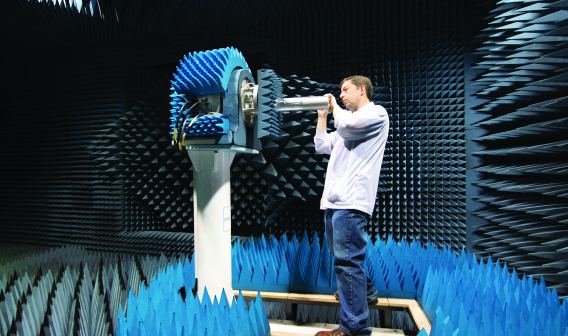VER: What does that manufacturing innovation mean in terms of changing skills, changing behavior both at the corporate level, but also on the workshop floor?
Larson: We’ve done a fair amount of work in efficiency process and streamlining process automations. It's like taking historical Toyota lean manufacturing in a framework that we refer to as Performance Enterprise System internally, and taking that to the next level with all facets of efficiency in that process.
You also have some other technological dimensions going on with emerging capabilities and things like additive manufacturing. On one end of the spectrum, it might be tooling, at the other end of the spectrum it’s high-temp metals that are embedded in products which can only be manufactured in a way that is allowed with an additive manufacturing methodology in mind.
From a skillset standpoint, we’re looking for not only opportunities to insert that kind of technology in an existing product capability, but to also try to get our teams thinking of designing in that kind of environment as opposed to a legacy environment with limitations that additive manufacturing may not have.
VER: What does that mean for the workforce of the future? What does that mean for what you’re going to need in terms of occupations, and skills in particular, and what are the things that states should be doing to prepare for that?
Larson: States and companies alike need to be open to everything from early partnerships with local organizations to pre-employment relationships with educational institutions. In the case of Virginia, we have a number of partnerships with institutions like the University of Virginia, Northern Virginia Community College, James Madison, George Mason, the American Institute of Avionics, etc., and organizations like the Greater Washington Partnership. We work with them to foster technology credentials, and more trades-oriented skills development and curriculum development, to fuel the kinds of thinking and awareness of technology our industry needs.
Some of those emerging people come out of the education systems more familiar with some of these new technologies, like additive manufacturing, virtual environments, or augmented reality, and how we can utilize those capabilities in our industry, than some of us are. We look forward to getting that vibrancy, and that ideation, and those diverse ideas into our employee population and the industry at large. For states like Virginia, I think it’s important to have a formative role in getting the talent pipeline ready and then it’s having the vibrancy and the businesses to give opportunities for people to use those skills and, for lack of a better way to phrase it, work on cool stuff.
Then you think about the future workforce with not only diversity and bringing new people along with the people you have, but diversity and inclusion in the form of the broader community you can involve in the pool of opportunities, and making sure you're leveraging that. The more diverse ideas you bring to the table, and the more diverse experiences you bring to the table, the better you do. The better the ideas, the more you can leverage the opportunity that's out there for the future. So it’s forming that pipeline partly, and then it’s thinking about what that pipeline is in maybe a more holistic way.
VER: How do you perceive the skills gap, and what’s driving it, and what is Northrop Grumman doing to overcome it?
Larson: We are undertaking a very broad set of activities through each of the businesses. Space is a great example. People love to think about what’s the art of the possible when thinking about space. And you bring that down to, what does that mean for the next generation? You want to do what you can to inspire them toward the possibility of STEM fields in some cases, and toward skilled trades in other cases.
We have a whole set of engagements aligned toward an integrated look at the future talent pipeline that hopefully helps what others are doing as well, so we can look at it all together in a way that supports trades, and STEM, and technical skills going forward.
VER: What do you think are the biggest things states and regions can do to better position themselves to retain the manufacturers that they already have, and also to attract manufacturing investment in the future?
Larson: It’s having a business-cognizant environment so we can have dialogue together and understand, and try to align on mutual objectives, of which I think there are many. It’s making sure that we have the right kinds of infrastructure for where our employees and future employees want to live, and making sure that communities are attractive to them, not just from a job standpoint, but that they are appealing to growing families and future generations.
And it’s having partnerships along the lines of technology investment, future skills development, research and development, and investing in what the future might look like. Realizing that not all of those things are necessarily going to pan out, but that you move forward in a focused way together, because then you have the benefit of leveraging collective efforts for a successful future.





